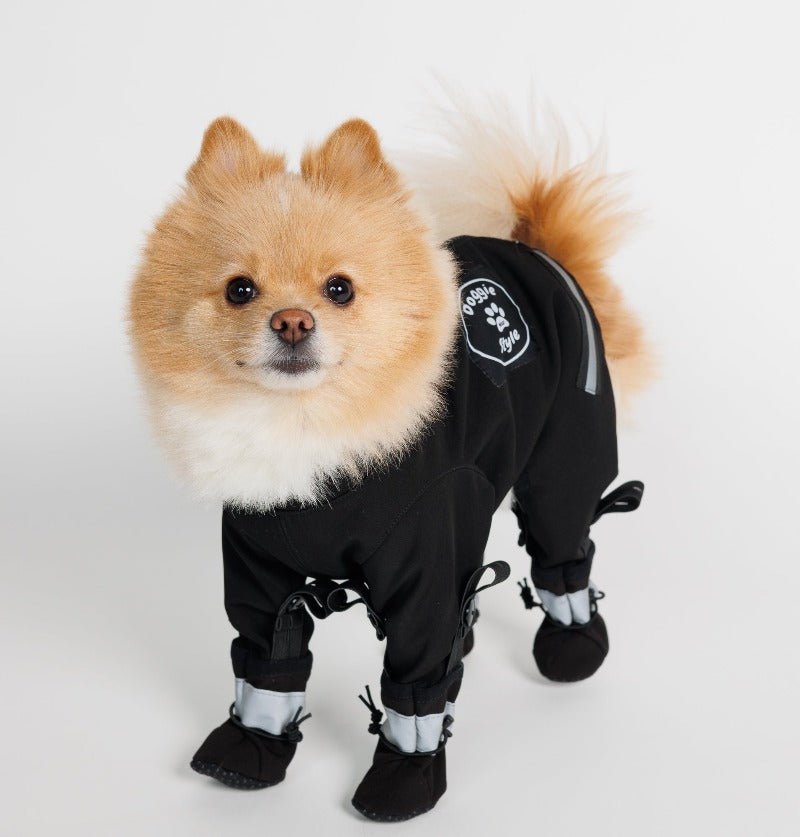
Protection of the dog's paws: 3 good reasons to get started!
Share
While Nordic dogs have paws that are resistant to the cold, this is not the case for our domestic dogs. The benefits of a good pair of boots are well known.
In nature, the ground is cool in summer. Think of the spongy soils of forests and the cool soils of meadows. In winter, pure snow welcomes the tough little paws of wild animals without harming them.
Urban walking conditions are nothing like those provided by Mother Nature. In winter, our roads are covered in corrosive salts. And in summer, the asphalt is saturated with heat.
So here are 3 good reasons to protect your dog's paws with dog boots for a worry-free walk.
To protect them from the cold
Your domestic dog is not like its cousin the sled dog. Just like us, our companions have adapted to a dry, warm, and comfortable environment.
Their little paws and fur haven't adapted to the extreme cold. Your veterinarian will confirm that Fido needs protection from extreme cold. If it's too cold for you, it's too cold for him.
In extreme cold, your furry friend can suffer from frostbite on their paws, ears, and tail. They can even freeze to death, just like you, if they stay outside unprotected for too long.
Even with good dog boots and a good coat, ears and tails can freeze. That's why, even when dressed properly, avoiding extreme cold is the best solution. In cold or moderate weather, boots and a coat will be essential for Fido to enjoy his walk. To protect them from corrosive salts, veterinarians say the products used in de-icing salts are irritating and toxic to animals.
Their exposed pads can become irritated, cracked, and inflamed. If your dog's paws hurt during winter walks, look no further. Salt and cold are responsible for their discomfort.
It's also important to know that these products are toxic when ingested. When our little friends have sore paws, they tend to lick them. This is how they ingest corrosive salts.
If the ingestion of salts is repeated during the winter, more serious digestive disorders may appear, such as a mouth infection and vomiting, for example.
There is reason to be vigilant and protect your dog's extremities to maintain good health.
Protect them from burns
In summer, unlike grassy fields, asphalt can reach temperatures of 60°C in direct sunlight. No animal is adapted to protect itself from such heat.
It's common for dogs to burn their paws during their summer walks. It doesn't have to be very hot for the asphalt to warm their paws. The sun's rays are enough to raise the temperature.
If your dog is limping and compulsively licking his paws, don't wait. Check his paw pads carefully. It can take several days for a burn to appear.
If burned, the skin on the paw pads becomes discolored. Sores and blisters may appear. This is very painful for your pet. Contact your veterinarian immediately if this occurs. They need a lot of care.
As a preventative measure, a little cream and a pair of lightweight summer boots will greatly relieve your dog's discomfort. He'll rediscover the pleasure of accompanying you on your daily walk. After all, it's so good to enjoy summer!
Today, our pet is a full-fledged member of our family. We want the best for their comfort and health. With that in mind, here's one last good reason to put boots on your pooch: they're so cute!
Your faithful companion will strut alongside you in style.
But the best part is that he will strut around carefree because he will be well protected against the aggressions of the outside world like cold, salt and heat.
Discover our most beautiful models of dog boots now!
Go see our article to help you choose your dog coat !
